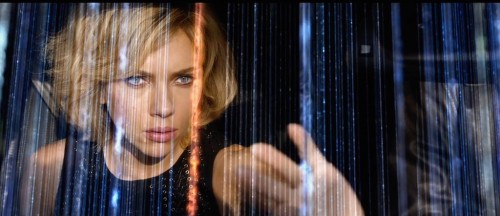
The 67° edition of the Locarno International Film Festival opened with Lucy in the outdoor Grande Piazza on August 6 before a standing room crowd. At the Festival, Luc Besson described Lucy as a thriller with action. In my book Savvy Characters Sell Screenplays! I write about how to develop characters in this genre.
In a thriller, your protagonist (often the ‘everyman’) must be in jeopardy and eventually outsmart the antagonist in order to survive. Readers must feel empathy for your protagonist and root for him or her to survive. The suspense must continue to build as your story unfolds with intricate twists and turns. Readers must sense the imminent danger. You must build the audience’s anticipation, uncertainties and questions, and deliver on their expectation—while keeping them guessing.
Lucy is an engaging protagonist because she is identifiable and resourceful, and uses her physical and mental prowess to survive against all odds. She is an unlikely hero.
Besson talked about his films with powerful action female characters, La Femme Nikita, The Fifth Element or The Messenger: The Story of Joan of Arc, stating:
“I think Lucy is different because Nikita, Leeloo and Joan of Arc were very powerful women with skills, whereas Lucy is a totally average girl at the beginning of this story. What was interesting for me about Lucy was to take a character, who represented Miss Average. She could have been me, or she could have been you. She had no particular characteristics. It’s the first time I took someone who is at the bottom of the ladder. She’s stupid in the beginning; she’s a student that maybe is partying too much, and sort of has a boyfriend. She’s away from home.
TO READ MORE:
http://www.screenwritersutopia.com/article/32622e96
